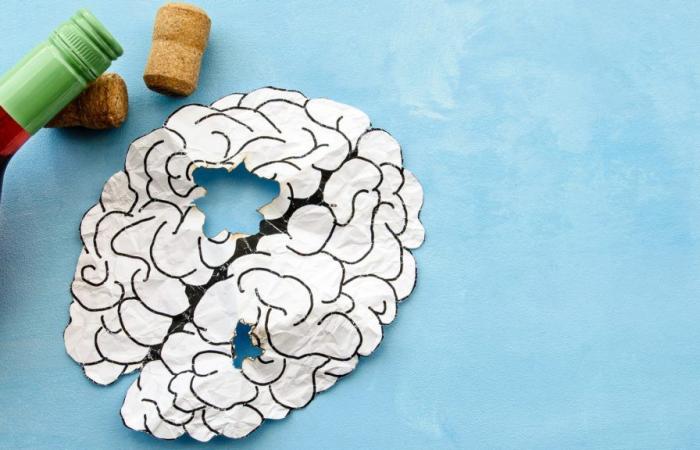Why can drinking be so much worse for someone in this age group?
The damage that alcohol does to the brains of teenagers and young adults
In many cultures, it is common for young people to drink. Whether it’s a glass of wine with dinner at home or beer and several “sneaky” vodka drinks with friends on a night out, many people start drinking alcohol at a young age, sometimes as teenagers. However, what does this mean for young adult development and long-term health?
Scientists are just beginning to understand the impact of alcohol on their bodies. And the news is not encouraging. On the contrary, the damage that alcohol intake causes to people in this age group is worse than to individuals over 30 years of age.
Curious? Check out this gallery to learn more.
©
Shutterstock
Alcohol is a toxin
It’s no big secret that alcohol is a toxin. We have known for years that, despite being enjoyable for many people, drinking alcohol carries several risks.
©
Shutterstock
Associated risks
The risks associated with drinking alcohol, even in small amounts, can include fatal accidents, liver disease and many types of cancer.
©
Shutterstock
WHO Council
In fact, the World Health Organization (WHO) has stated, “When it comes to alcohol consumption, there is no safe amount that will not affect health.”
© Getty Images
Cost benefit
The problem is that people tend to like drinking. For many of us, the benefits of having a glass or two of wine far outweigh the risks.
©
Shutterstock
Limit the damage
For this reason, the objective of public policies in many countries around the world is to encourage harm limits by promoting moderate alcohol consumption.
©
Shutterstock
Council in the USA
In the US, for example, the general advice is to drink a maximum of two drinks a day for men and one drink for women. Many other countries have the same guidance.
©
Shutterstock
Types of alcohol
According to US guidelines, the type of alcoholic beverage is not important, although many people consider beer and wine to be safer than other “stronger” beverages.
© Shutterstock
Volume is what matters
Instead, it’s the volume of alcohol that matters. For example, a 355 ml beer contains approximately the same amount of alcohol as a 148 ml glass of wine or a 44 ml shot of liquor.
©
Shutterstock
Alcohol and teenagers
When it comes to alcohol consumption among young people, public policies tend to focus on protecting children while giving young adults the freedom to make their own choices.
©
Shutterstock
Drinking age
It is for this reason that the legal drinking age is set at 18 in many countries, such as Brazil. In the US, the limit is slightly higher, 21.
© Shutterstock
The limits are very low
However, both age groups can be very young. According to research, the impact of alcohol is particularly toxic for young adults in ways that we are only now beginning to understand.
©
Shutterstock
Size and shape
Firstly, alcohol is most dangerous for young people who have just passed the legal drinking age because they have not yet reached their full body size and shape.
©
Shutterstock
Size and shape
In fact, today’s teenagers only reach adult height at age 21, and even when they do, they don’t have the bulk or weight of people in their 30s and 40s.
©
Shutterstock
Blood alcohol content
Alcohol consumption results in a higher blood alcohol content for young people than for adults, which in turn means greater toxicity.
©
Shutterstock
Big heads
Young adults also tend to have a higher head-to-body ratio, i.e., a larger head. They are more likely to look a bit like a “bobblehead” toy, that type of doll with an oversized head compared to the body.
©
Shutterstock
Intoxication levels
This is problematic when it comes to alcohol consumption because these relative proportions determine the level of intoxication a person can experience.
©
Shutterstock
Five minutes to get to the brain
When someone drinks alcohol, it enters the bloodstream and spreads throughout the body. In five minutes, it reaches the brain.
©
Shutterstock
Blood-brain barrier
Alcohol easily crosses the blood-brain barrier, which generally protects the precious brain from harmful substances.
©
Shutterstock
Alcohol poisoning
For young adults, a relatively large proportion of the alcohol they drink ends up in the brain. This is another reason why they are more likely to experience alcohol poisoning.
©
Shutterstock
Long-term development
It is also believed that drinking during adolescence can harm brain development in the long term. Studies have shown that it can cause a faster decline in gray matter and slow the development of white matter.
©
Shutterstock
Cognitive function
Although the long-term impact of teenage alcohol consumption may not be immediately evident, over time these effects will begin to show up on cognitive tests.
©
Shutterstock
Gradual decline
According to neuropsychologist Lindsay Squeglia, “After several years of drinking, we see less activation in the brain and worse performance on these tests.”
©
Shutterstock
Effect on mental health
Evidence also suggests that early alcohol consumption has a considerable impact on mental health and makes people more susceptible to alcohol abuse later in life.
© Shutterstock
Family history
This appears to be particularly true for people with a family history of alcohol abuse. The sooner they start, the more likely they are to develop a problem.
©
Shutterstock
The European model
So how can we protect our young people from the dangers of drinking alcohol? Many people would argue that the European model, where parents allow their children and teenagers to drink in moderation at home, should be encouraged.
©
Shutterstock
The ‘forbidden fruit’ can be tempting
The idea is that by being exposed to alcohol in a safe environment, young people will not see alcoholic beverages as some kind of “forbidden fruit” to abuse when they finally come of age. But does this concept work?
©
Shutterstock
Ending the myth
However, evidence suggests that this theory is not true. In fact, research shows that the more liberal a parent is about alcohol consumption, the more likely a child is to develop a drinking problem later in life.
©
Shutterstock
Does raising the legal age solve the problem?
On the other hand, simply raising the legal drinking age to 25, as has been suggested, doesn’t seem like a good idea either. People will likely perceive this as an attack on their personal freedom.
©
Shutterstock
A solution?
Perhaps, for now, the goal should be to provide young people with more information about the risks of alcohol consumption and how it can affect the maturing brain.
Sources: (BBC) (NIAAA)
©
Shutterstock
Lifestyle
Alcoholic beverages
19 mins ago
BY News Ao Minute
In many cultures, it is common for young people to drink. Whether it’s a glass of wine with dinner at home or beer and several “sneaky” vodka drinks with friends on a night out, many people start drinking alcohol at a young age, sometimes as teenagers. However, what does this mean for young adult development and long-term health?
Scientists are just beginning to understand the impact of alcohol on their bodies. And the news is not encouraging. On the contrary, the damage that alcohol intake causes to people in this age group is worse than to individuals over 30 years of age.
Curious? Check out this gallery to learn more.
SHARE THIS NEWS






